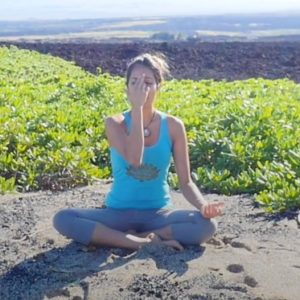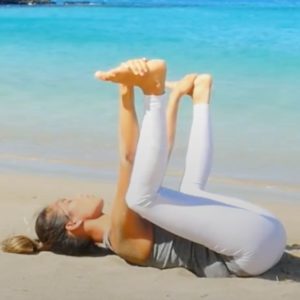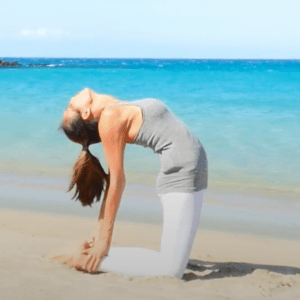Today’s Poses – High Lunge Pose and Supported Shoulder Stand
High Lunge Pose and Supported Shoulder Stand
High Lunge Pose
A high lunge is considered a dynamic pose whereas a low lunge is a beginner’s pose where the knee rests on the floor behind.
Steps
- Start in Downward Facing Dog Pose.
- Inhale raise the right leg behind you and then exhale as you step the right foot forward between your hands.
- Check that the right knee is aligned above the right ankle.
- Ground through the feet, pull your lower abs in as you exhale, then inhale sweeping your arms out and up, palms facing towards each other
- Bend your back knee a little, lengthen your tailbone down towards the floor, then extend through the back leg, opening and stretching the sole of the foot.
- Open your chest and draw your front ribs down into your torso.
- Stay for five breaths.
- Bring your hands onto the floor by your right foot as you exhale.
- Step your right foot back into a Downward Facing Dog pose.
- Repeat with the left foot coming forward.
Benefits
- It helps with mobility in the hip flexors and the feet.
- Strengthens the legs.
- It improves balance and stability.
Supported Shoulder Stand
Shoulderstand is entered from a supine position with the knees bent. The shoulders may be supported on folded blankets, and the upper arms may be held in with a belt just above the elbows. Beginners may lift with bent legs, advanced users with straight legs. The back is supported by the hands: once up, the hands reach lower down the trunk towards the head, and the trunk is lifted further; the legs may then be straightened to a vertical position.
Benefits
- Calms the brain and helps relieve stress and mild depression
- Stimulates the thyroid and prostate glands and abdominal organs
- Stretches the shoulders and neck
- Tones the legs and buttocks
- Improves digestion
- Reduces fatigue and alleviates insomnia




